Moon Monday Issue #44
ISRO releases new Chandrayaan 2 orbiter documents, hardware for NASA's first crewed Artemis Moon landing takes shape, exploring the geologically rich Aristarchus region, and more lunar developments.
Highlight
At the Lunar Science Workshop on September 6 and 7, ISRO released new documents for people interested in analyzing the publicly available data from their Chandrayaan 2 orbiter.
- A Science results Handbook provides detailed descriptions of the orbiter’s instruments and their operations, and an overview of science results from them.
- A Payloads and Data Products document discusses operations of the instruments, and details the analysis of data products from each.
- Lastly, a generic handbook provides an overview of it all for a broader audience.
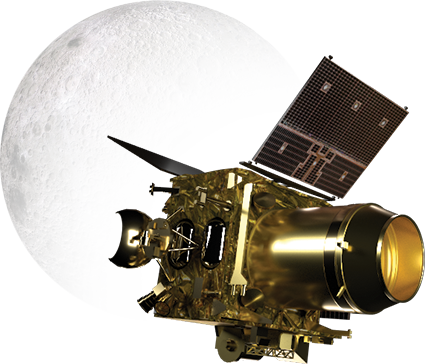
So far, ISRO has released about 1.25 TB of instrument data to the public for scientific analysis, with more to come. This new document release follows the Announcement of Opportunity (AO) call in August to fund Indian researchers to study the Moon using the orbiter’s data. Foreign researchers can still access the data on their own, albeit without grants. It should be noted that ISRO’s data portal is compliant with NASA’s Planetary Data System (PDS), and that the Chandrayaan 2 data is available in the latest PDS4 format to make it easy for international researchers to use its datasets.
Here are some of the recent discoveries by the Chandrayaan 2 orbiter:
Detecting even more water on the sunlit Moon – Paper | Moon Monday coverage
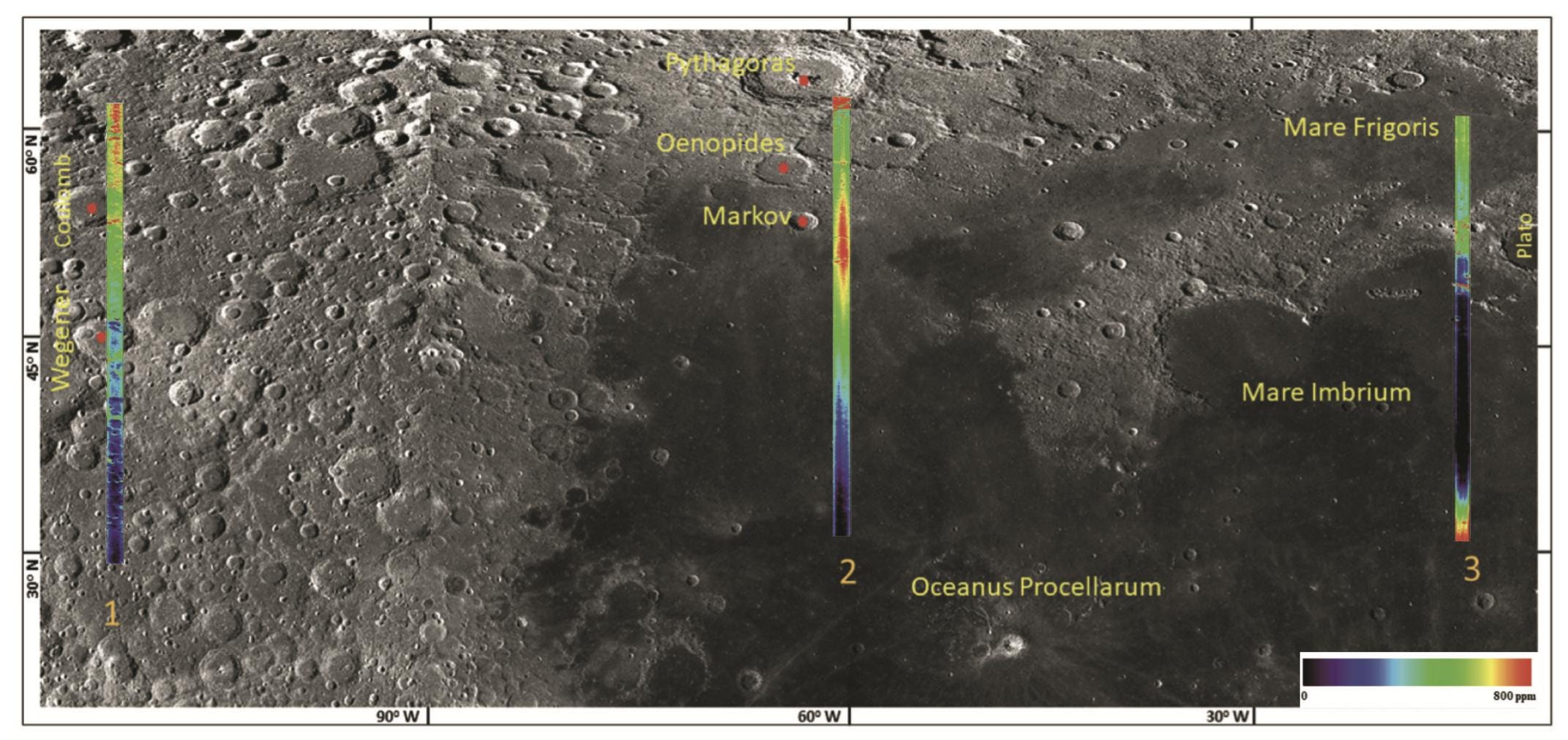
Water concentrations in the Moon’s mid-northern-latitudes, as observed by the ISRO Chandrayaan 2 orbiter’s infrared spectrometer. Credit: Prakash Chauhan, et al. Detecting Chromium on the Moon – Abstract | Moon Monday coverage
Mapping the structure of a 220-kilometer long wrinkled ridge – Paper | Moon Monday coverage

3D view of a wrinkled ridge on the Moon generated from images captured by the Chandrayaan 2 orbiter’s Terrain Mapping Camera. Credit: ISRO Initial results from the radar, the first fully polarimetric synthetic aperture radar sent outside Earth orbit – Paper | Moon Monday brief
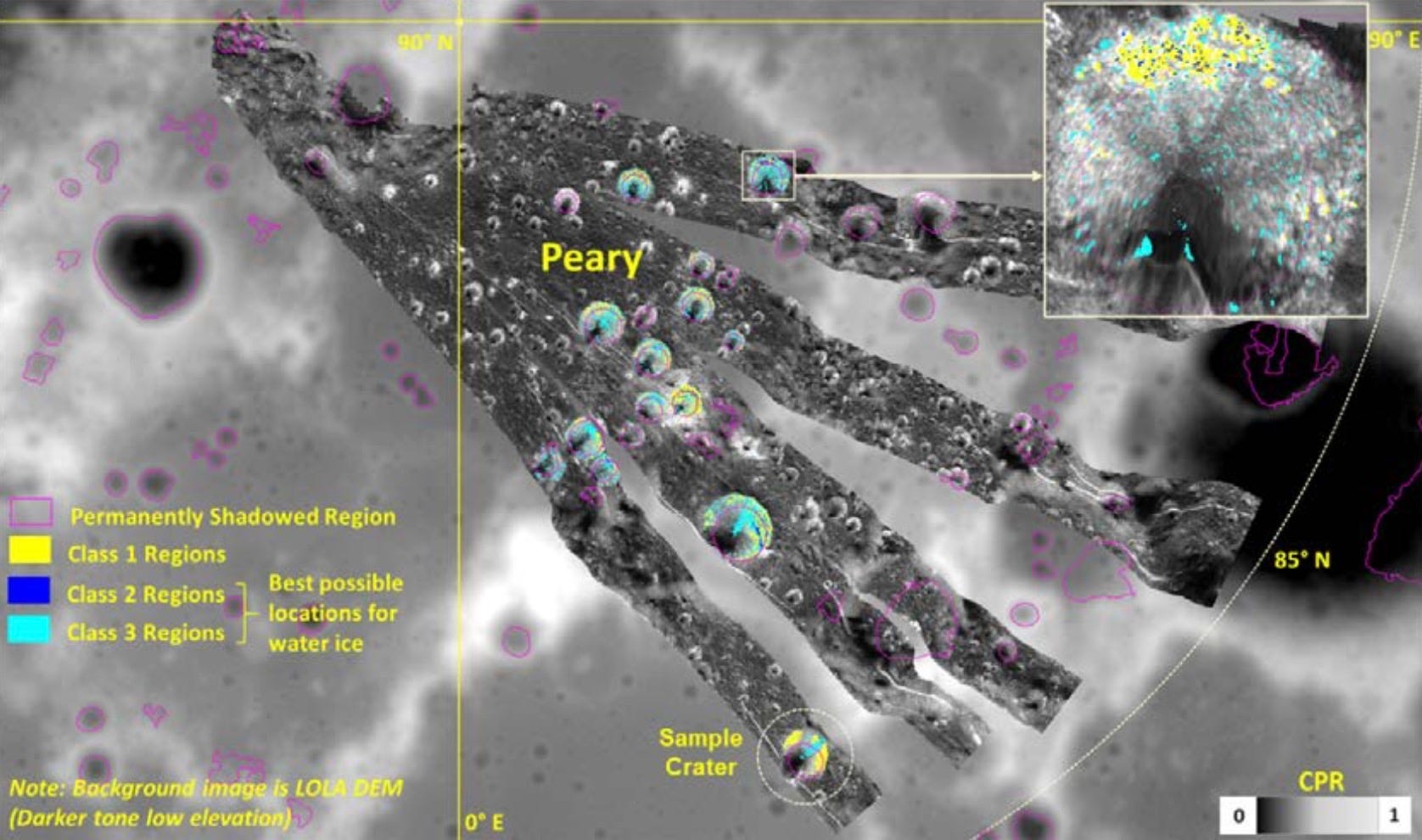
The most plausible locations of water-ice within the permanently shadowed regions of Peary crater on the Moon’s north pole, as mapped by the Chandrayaan 2 orbiter’s radar. Credit: ISRO
Exploration
The Chang’e 5 orbiter module, which helped bring young lunar samples to Earth last December as part of China’s Chang’e 5 mission, is now heading back towards the Moon after performing tests and observations around the Sun-Earth Lagrange point 1 for months. While there is no official word, data from satellite trackers suggest the Chang’e 5 module performed a lunar flyby on September 12 (UTC). It isn’t clear yet if it will enter lunar orbit or visit other gravitationally stable points in the Earth-Moon or Earth-Sun system.
The German Space Agency head Walther Pelzer told Sputnik he plans to discuss participating in the Chinese-Russian International Lunar Research Station project with the Russian space agency in an upcoming meeting. The station, which begins construction in 2026, is to be a long-term scientific base centered at the Moon’s south pole, with several complementary orbital and surface infrastructure elements. The base will be largely robotic for its first decade, and then be followed by sustained crewed operations. ESA Director General Josef Aschbacher told Sputnik earlier that ESA member states are discussing an offer made by China and Russia about collaborating on the project, but no decision has yet been made.
Hardware for NASA’s first Artemis crewed mission to the Moon’s surface is taking shape. NASA recently completed welding the pressure vessel for the Orion spacecraft to be used on the mission. Astronauts will launch to the Moon in this capsule and dock with SpaceX Starship in lunar orbit, which will then transport two astronauts to the Moon’s surface and back. Under the contract to produce Orion awarded to Lockheed Martin, NASA committed to ordering a minimum of six and a maximum of 12 Orion spacecraft, of which NASA has already ordered 5 capsules for Artemis missions I through V. NASA plans to order three additional capsules next year for Artemis missions VI through VIII.
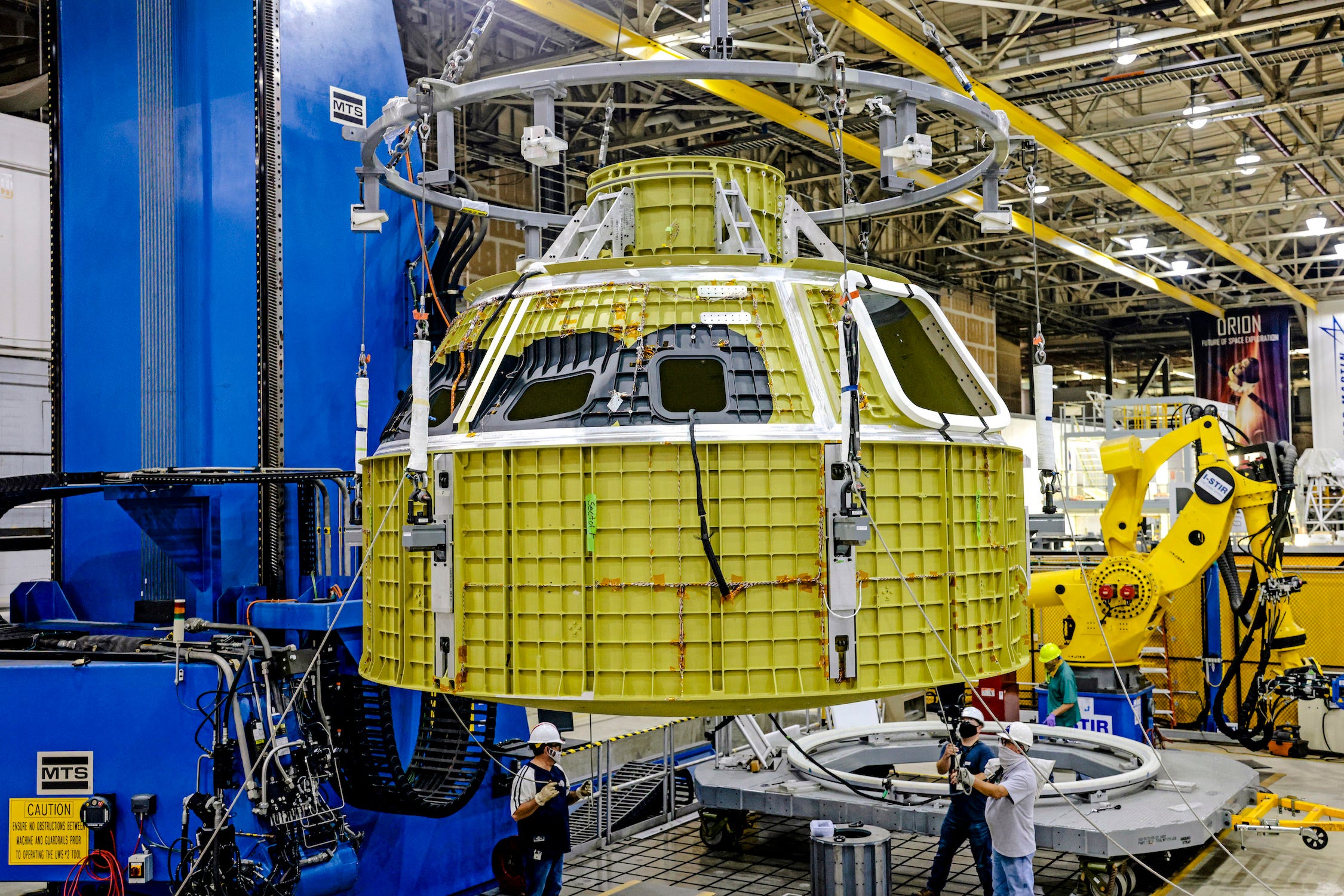
Related: On September 9, the U.S. House Science Committee passed a $4.4 billion spending bill for NASA to maintain and upgrade its infrastructure. However, NASA administrator Bill Nelson had hoped to secure $15.7 billion from this bill, about $10 billion of which would’ve gone to a second Human Landing System provider to compete with SpaceX Starship for the first crewed Artemis mission. As such, the bill has ended up provided no funding for crewed lunar lander development.
Under the Small Business Innovation Research and Small Business Technology Transfer (SBIR / STTR) program, NASA has awarded a total of $20 million to five U.S. small businesses to accelerate development of novel lunar technologies for the Artemis program. Each award is valued at $2.5-5 million per company, and covers things like maturing thermal technologies to enable lunar hardware to survive the frigid lunar night or explore permanently shadowed regions, building efficient propulsion systems and versatile robotics, and making cheap, high-performance radiation-tolerant spacecraft computers.
Science
The 40-kilometer wide Aristarchus crater on the Moon is a feature visible to the naked eye as a small bright dot to the northwest. The crater was a candidate landing site for the now-cancelled Apollo 17+ missions. Now scientists are vouching for a series of missions to the geologically rich region the Aristarchus crater is embedded in, with the promise of big lunar science returns. The region has a mineral-rich ancient plateau, a block of rocky lunar crust uplifted during the impact that formed the huge Imbrium basin. It also features the largest volcanic rock fragment deposits on the Moon, the largest valley on the Moon Vallis Schröteri, and a mix of basaltic and silicic volcanic features.
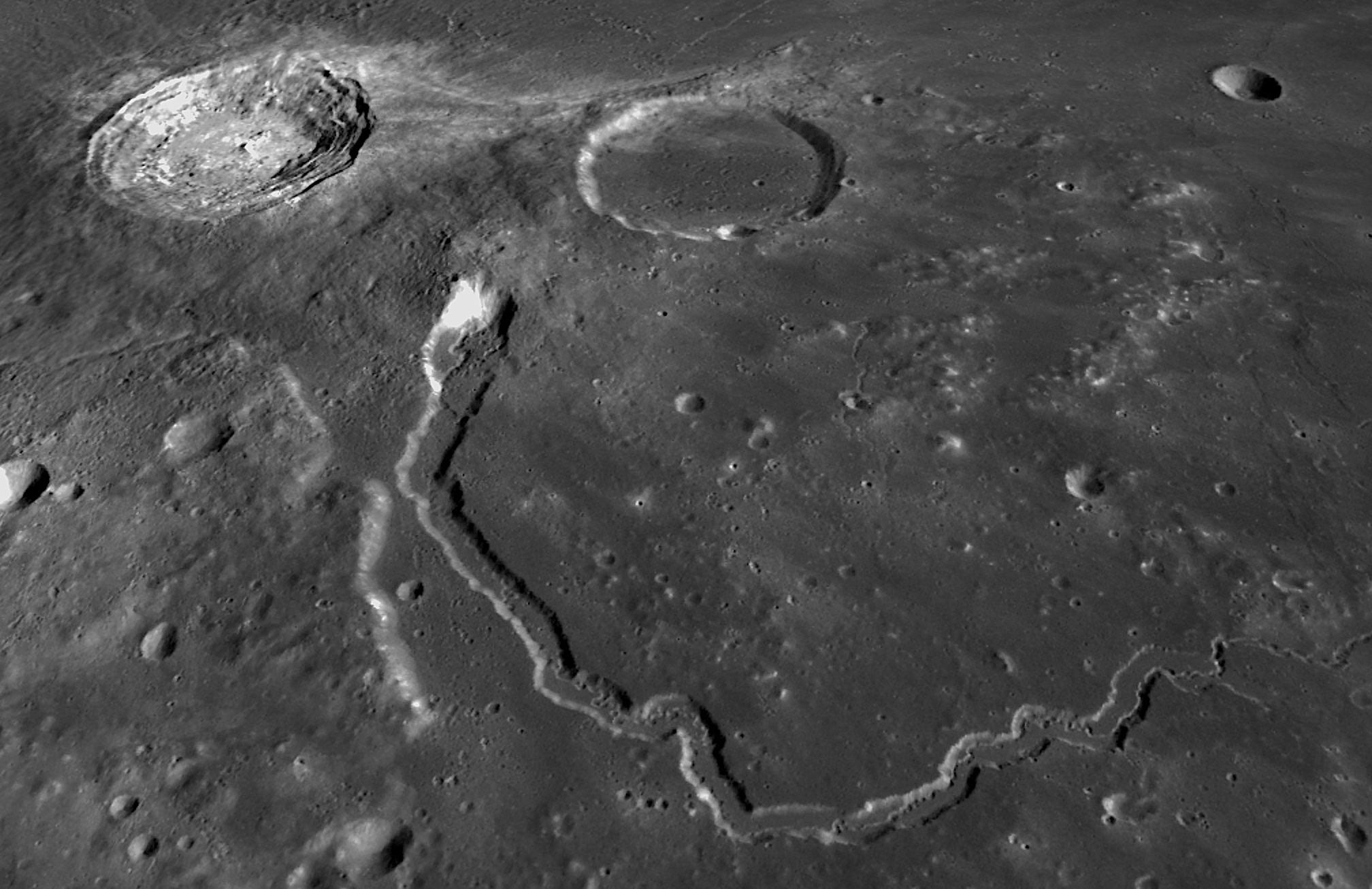
Vallis Schröteri is approximately 160 kilometers long, is up to 11 kilometers wide and almost 0.5 kilometers deep. Look closely and you’ll see a secondary lava channel running within it. Such nested form of lava channels hint to multiple past volcanic eruptions in this region, and that the lava was highly fluid judging by how easily it carved twists and turns in the terrain. A new paper combines data from several past lunar orbiters to provide an holistic overview of the region, and new analyses on its scientifically interesting places. It makes the case that missions there would enable analyzing silicic rocks rare in the largely basaltic Apollo samples, and that the region is a great place to demonstrate in-situ resource utilization technologies on iron- and water-bearing volcanic materials.
ESA continues its Pangaea campaign to train astronauts in geology, a highly valuable skill in exploring the Moon’s surface and collecting samples. This year’s participants—European astronaut Andreas Mogensen and engineer Robin Eccleston, and NASA astronaut Kathleen Rubins—are taking field trips to the Italian Dolomites mountains, the Geman Ries crater, and the Spanish volcanic landscapes of Lanzarote, all terrestrial analogues to places on the Moon. Kathleen is part of the astronauts group selected for Artemis, and could become the first woman to land on the Moon.
Aiding the astronauts on the field are two sophisticated tools ESA is helping develop: the PLANMAP project to provide comprehensive geologic maps and the Electronic Field Book (EFB) to helps astronauts identify minerals, record their steps, and integrate inputs from microscopes and 360-degree cameras.
Related: The Center for Lunar Science and Exploration in the U.S. will be providing virtual field training at Meteor Crater to (selected) graduate students and postdocs on October 15-16, 2021.
More Moon
Paul Voosen from science.org has published a great overview of NASA’s CLPS program to send scientific instruments and technology payloads onboard commercial landers.
Dear reader, I’m publishing this one-of-a-kind Moon exploration newsletter for free, with no ads. And it will stay that way. If you like my work, your support will keep it going.
